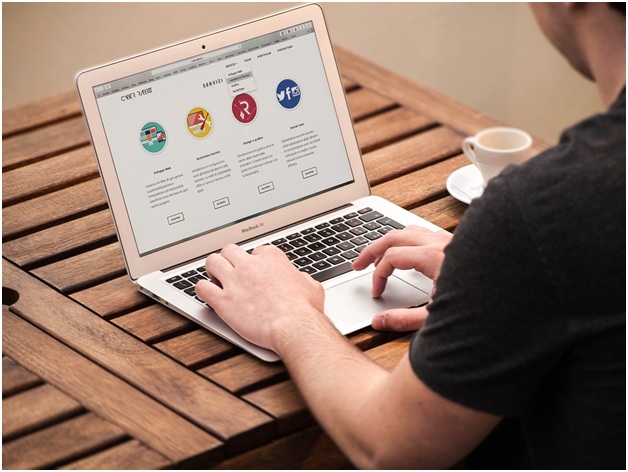The logo is one of the most fundamental components of your branding, which sets the tone for all future marketing endeavors. It is also the graphical representation of a company and serves as a beacon to potential and loyal customers. When done right, a logo can compel people to buy from you and reiterate your reputation as a trustworthy business. According to Render forest, 75% of people recognize a business by its logo, making it the most recognizable brand identity followed by visual style and brand colors. Therefore, it is understood that your logo design should captivate viewers, convey your business’s core purpose, and resonate with your audience. Owing to a single graphical creation’s numerous expectations and responsibilities, it becomes imperative for the logo to follow a few golden design principles. Following are the logo designing principles and converting power of a logo:
Simplicity
It is effortless to go overboard and incorporate numerous design elements in a single logo to increase its efficacy. However, the best logos are those that are simple, straightforward, and easily identifiable.
Several reasons back the effectiveness of a simple design. Firstly, consumers are being bombarded with content and advertisement on every tangible and intangible platform. If your logo is too complicated, it will fail to deliver a lasting impact. Since a logo appears in various formats and sizes, it should be flexible to avoid losing its finer details when printed too small. In addition, no one has the time to decipher the meaning behind every minute designing elements.
Therefore, keep it simple, make an integral element the focal point, and add colors sparingly. Make use of the white spaces to incorporate the distinction between graphics and use decipherable fonts.
When designing a logo, ensure that it is clear and understandable while portraying your company’s philosophy. Draw inspiration from Nike’s swoosh or Target’s bulls-eye; it does not get any simpler than this!
Distinctiveness
The fundamental purpose of a professional logo designs to define your small business perfectly and give your brand a unique identity. It should distinguish you from the competition and stand out from the crowd while conveying your niche. Furthermore, it should be attractive and unforgettable, so people remember it after a strong first impression.
Therefore, do quick market research to gauge out the logos in your industry. Analyze the patterns and elements most prevalent amongst them and try to avoid using them in your design. Strive towards creating originality so your customers reach out for your products despite a fleeting glance at the packaging.
Scalability
Scalability refers to a logo’s ability to adapt itself to different sizes and platforms. Your logo appears on visiting cards, packaging, social media marketing, banners, and so on. Thus, it should have the capability to function in small and large formats incorporating seamlessly in any context.
Scalability is directly related to simplicity. A logo with too much detailing is much harder to scale down as compared to a simple one. Whether it appears on a small pen or a massive billboard, a professional logo design retains its legibility, appeal, and prowess regardless of where it appears.
Therefore, create your logo in vector format to make rescaling easier. Do a few test runs to see if the logo is effective in various sizes. Does it become indecipherable when it is scaled down to fit on a visiting card? Is it convertible on a social media post? Does it look sharp even when blown up to appear on the side of the truck?
Answering these questions will lead you to a fantastic logo design.
Versatility
In addition to being scalable, your logo should be versatile. While both these design principles may appear to have a similar meaning, they have a few differences.
Versatility refers to logo’s capability to look good on any media.
The logos designed on digital media may appear vivid and striking, only to look flat and tacky when printed on a tactile material. Similarly, the logos should not be deformed or de-shaped on long, horizontal, or vertical ad banners. Finally, you want your black-and-white logo to be as converting as the colorful one.
A good logo never loses its integrity irrespective of its placements. So, consider the textures and patterns of the print material and the color models (RGB, CYMK, Pantone) when creating a logo.
Memorable
A professional logo design defines your small business perfectly and makes it memorable and impactful. It sticks to the minds of the consumers and is easy to recall at a moment’s notice. Unique logos are also one of the biggest tools in your marketing arsenal, as they can effectively promote and identify a brand amongst the clutter.
Some of the most unforgettable and impressive logos are simple and distinctive. Consequently, people can easily describe a logo if they are looking to recommend your business. Conversely, highly stylized and complex logos are often dismissible since they are difficult to commit to memory.
Strategic use of colors
Colors have the potential to provoke powerful emotions. Thus, they play a defining role in logo design.
Your choice of colors depends largely on your brand’s identity. If you want to evoke passion and energy, opt for bright red, or go for blues for their calming aura and trustworthiness. Similarly, green looks wholesome and organic, while orange appears cheerful and enthusiastic.
However, minimalism is the key when choosing the color palette for your logo. According to statistics, 95% of businesses use a maximum of two colors in their logos. One or two focal hues keep your design interesting, dynamic, and effective.
Timelessness
As a rule, logos should withstand the passage of time and remain relevant despite the changing trends. They should serve as a trusted symbol and depict the fundamental ideas across the years as your brand evolves and grows.
Therefore, always prioritize a classic look over the current fads to ensure the longevity of your design. Something that looked trendy and chic at the time may appear redundant and tired once the trends change.
Moreover, revamping a logo is not always the most feasible of options, especially for small businesses. Since the logo is printed almost everywhere, changing it will result in a loss of inventory and packaging material, adding up to an insurmountable cost.
Balance
The human eye perceives symmetry and balance in any design as beautiful and appealing. Therefore, the most impressive logos are equally proportional and symmetric.
Proportional logos are those that have equally weighted elements on both sides of an imaginary central line. Most competent designers use the design rules such as the “golden rule” and the “rule of thirds” to ensure that the final product appears balanced and equally adjusted.
Conclusion
The design principles pertinent to logo creations lead to a timeless and memorable product every time. As long as you pay attention to the simplicity, scalability, and versatility of the logo, you can reproduce and translate it on any channel without affecting its integrity. Intuitive use of colors further enhances the potency of a good logo while making it distinguishable and noticeable.












